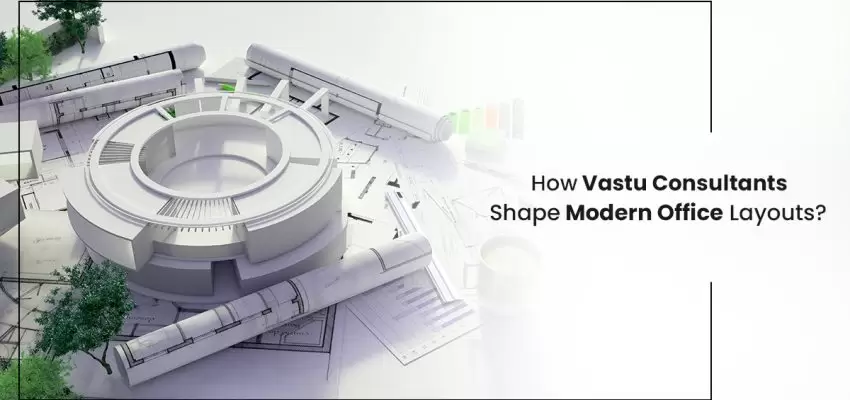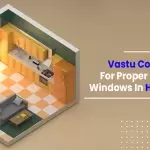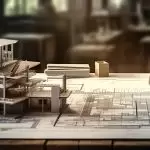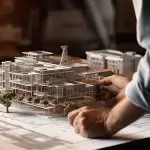The office environment has a significant impact on employee productivity, positivity, and overall business success. When designing office spaces, companies today consider not just infrastructure requirements but also aspects like spatial configurations, layouts, and harmonious energy flows. This is where Vastu consultants come in to create balanced, future-ready workplaces based on the ancient Indian science of architecture and design.
Post your Requirement
Vastu is considered to bring good fortune and prosperity when its principles are correctly incorporated into buildings. With roots in Vedic scripts, it has guidelines on shapes, positioning, colors, and material usage to create positive energy surroundings. By consulting Vastu experts, architects apply this conventional wisdom to craft inspiring workplaces to facilitate employee well-being and organizational growth.
We look at how Vastu consultants collaborate with corporate architects to shape office plans suiting modern contexts and transcending typical norms to build vibrant, inviting work zones.
Site Selection and Analysis
Vastu emphasizes selecting lands with optimal shape, soil quality, slope, and orientation for construction based on scientific reasons. Certain locations are deemed inauspicious for commercial structures as per ancient texts. Vastu specialists analyze proposed sites on various aspects before approval.
They check the shape of the land, availability of sunlight, wind direction patterns, and soil stability among other attributes. Lands with excessive moisture content, marshy patches, or a history of flooding or fires are avoided as unsuitable for buildings. The presence of termite colonies or ant hills also flags concerns.
Vastu experts identify any negative energy zones within sites like disharmonious vibrations from neighboring structures. After detailed evaluations accounting for science and spirituality, suitable site plans are chosen for commencing design. This diligent selection itself lays a strong foundation for erecting vibrant offices.
Structure Shapes and Office Entrances
Vastu delineates specific structure shapes and entrance positions considered welcoming in commercial buildings for prosperity. Commonly prescribed shapes are square or rectangle with balanced dimensions on all four sides. Irregular shapes are modified by Vastu consultants through extensions or truncations to achieve geometric harmony.
Ideally, the main workplace entrance should be bigger and more prominent than other doors. The main door’s location also bears significance to facilitate positive energy inflows when opened. North or east-facing main entries are recommended for offices with east being the most preferred. Corners or center points of building walls make good spots aligned to Vastu dictums on entry design.
Customized Office Layouts
Office layouts assign designated spaces for various departments, meeting rooms, cafeterias, and other functional zones. Vastu principles on spatial hierarchies, symmetrical vs asymmetrical placement, and cardinal alignments provide guiding frameworks for architects to create customized floor plans.
Reception and lobby areas form the ‘head’ of structures in Vastu schematics. The movement then progresses downwards to ‘organs’ like workstations and meeting rooms while storage spaces and washrooms form the ‘feet’. Employee desk positioning also follows Vastu grid patterns which structure efficient traffic flow.
Vastu consultants collaborate with architects on office blueprints, advising updates where needed to achieve balance through office zoning, sensible departmental adjacencies, harmonious shapes, and optimal daylighting.
Natural Elements and Materials
Vastu emphasizes integrating nature into built spaces through open green zones, gardens, miniature water bodies, and waterfall features. These natural components uplift workplace energy, creativity, and ecological sustainability. Vastu principles guide the inclusion of such features in optimal sizes and directions during office landscaping.
The choice of construction materials also impacts energy flows as per Vastu Shastra. Earthy, natural materials like bricks, wood, bamboo, etc. find favor over artificial alternatives to spread warmth and welcome. Fabrics, flooring, and wall finishes too are selected in Vastu-recommended earth tones and patterns known to boost concentration and cheer.
Incorporating Macro and Micro Vastu Features
Vastu inputs apply from the architectural planning level down to office furniture placement providing micro and macro level enhancements.
At a macro scale, Vastu consultants recommend overall building forms, layouts, and finish materials for openness and harmony. Customized enhancements like concentric office spaces, modified entrance gates, or special architectural motifs also get envisioned to improve energy flows. Specific spaces may be earmarked for meditation zones, waterfalls, or mini-gardens to nourish creativity.
The micro perspective sees Vastu’s advice on workstation seating patterns, individual cabin/chamber locations, interior color schemes, and inspirational imagery for balance. Placement of electrical goods, electronic items, and lighting arrangements also fall under micro corrections by Vastu specialists supporting managers and employees.
With their 360-degree vision spanning granular to holistic, Vastu experts deliver comprehensive office plans promoting success and contentment.
Integrating Ancient and Modern Design Elements
Blending ancient Vastu principles with contemporary aesthetics requires skillful synthesis by designers. The interplay of traditional knowledge and cutting-edge technology makes for future-ready office environments.
Vastu components like a central courtyard or miniature garden seamlessly integrate with modern skylights, wind towers, and sustainable features. Age-old pavilion-style structures find a new form with angular solar panels on roofs and spiral ramps for access. Contemplative zones housing a lone tree or under rocky waterfalls combine subtle spirituality with minimalist decor through this fusion.
Ergonomic workstations, collaborative lounges, modular meeting pods, and flexible multi-use halls also adapt Vastu layout guidelines for efficiency and occupant wellness. High-tech innovations coexist harmoniously with Vastu pillars, paintings, and elemental artworks carrying symbolic meanings.
Vastu experts envision such synergistic mergers of forward concepts with India’s architectural wisdom to create inspiring, productive workplaces.
Boosting Brand Ethos and Working Culture
For modern companies, the office space serves as their flagship identity venue reflecting core values and work philosophies. Vastu inputs help envision offices that truly represent their brand story and desired culture.
Vastu-based characteristic theme offices are created for health startups, creative agencies, NGOs, or tech giants wishing to express their purpose through design. The infusion of signature elements like vibrant wall art, resonant symbols, motivational imagery, and custom spatial flow patterns makes the workplace mirror organizational beliefs.
For instance, an environmentally conscious firm’s office may highlight recycled materials, sustainable construction, natural lighting, and liberal green patches. Meanwhile, a humanitarian non-profit may emphasize community areas, shared kitchens, and uplifting wall quotes.
Vastu principles offer frameworks to manifest corporate DNA through workplace architecture and interiors for authentic brand expression.
Facilitating Long-term Success Goals
An office shaped by Vastu is believed to facilitate organizations in achieving their short and long-term success milestones through positive energy facilitation. Vastu inputs during construction itself, as opposed to later superficial fixes, produce deeply embedded results claim experts.
When employees inhabit offices consciously configured for universal harmony rather than just convenience or style, a spirit of dedication and industry gets kindled gradually. Enhanced focus, decision-making, cooperation, and efficiency manifest collectively driving development. People also connect more meaningfully within thoughtfully zones spaces unified by natural elements over time.
Proponents emphasize that such Vastu-optimized environments foster steadier, healthier business growth in the long run through goodwill regeneration. Synchronous external and internal progress then supports companies in realizing targets as a tight-knit unit beyond individual objectives.
While the Vastu application in offices is gaining popular acceptance today, practitioners recommend exercising diligence to avoid superficial cosmetic integration alone. Deep-rooted office spaces call for a thorough evaluation of construction sites, structural bones, spatial linkages, and finishing touches in unity. Office Vastu requires a holistic vision to harmonize built forms, human auras, brand purposes, and biophilic nature for an elevated working environment physically and metaphorically.
Conclusion
Vastu philosophy offers a framework of guidelines based on scientifically inclined architectural principles that emphasize harmony with nature. Incorporating Vastu elements in modern offices aims to nurture balance, clean energy flows, and mindfulness while fulfilling functional needs.
Vastu consultants collaborate with designers right from the location finalization stage onwards, providing customized recommendations to shape office plans. They analyze sites, contours, and surroundings before giving layout inputs down to furniture. Larger organizational goals also get factored for offices mirroring brand ethos through architecture.
Skilled synthesis of age-old and contemporary design allows workspaces to align with Vastu’s wisdom yet remain oriented to emerging opportunities. When appropriately integrated through competent experts, Vastu-conscious office plans foster long-term well-being, efficiency, and growth in the age of conscious, eco-aware workspaces.























Post A Comment